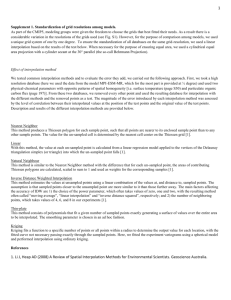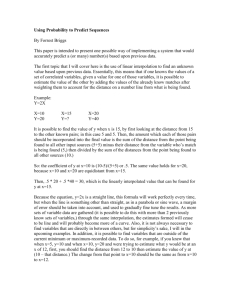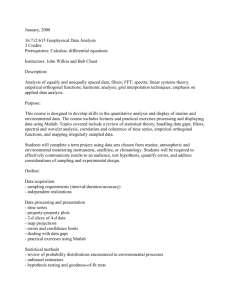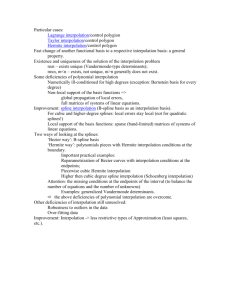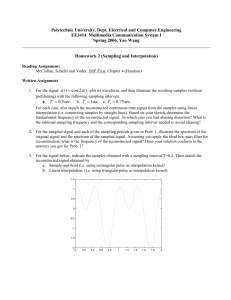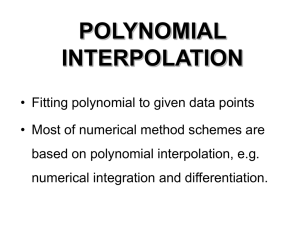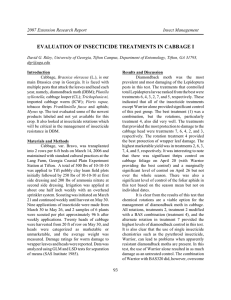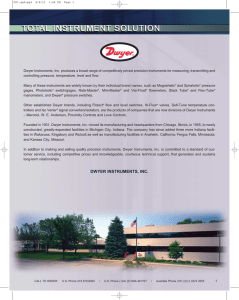Chemical Engineering
advertisement
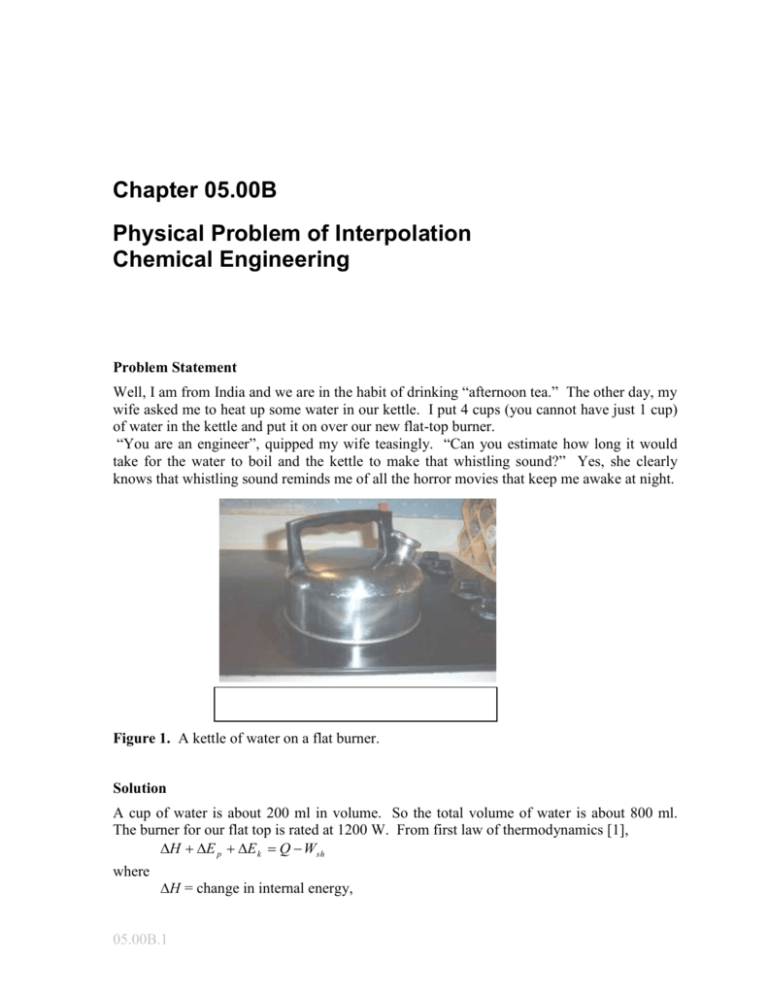
Chapter 05.00B Physical Problem of Interpolation Chemical Engineering Problem Statement Well, I am from India and we are in the habit of drinking “afternoon tea.” The other day, my wife asked me to heat up some water in our kettle. I put 4 cups (you cannot have just 1 cup) of water in the kettle and put it on over our new flat-top burner. “You are an engineer”, quipped my wife teasingly. “Can you estimate how long it would take for the water to boil and the kettle to make that whistling sound?” Yes, she clearly knows that whistling sound reminds me of all the horror movies that keep me awake at night. Figure 1. A kettle of water on a flat burner. Solution A cup of water is about 200 ml in volume. So the total volume of water is about 800 ml. The burner for our flat top is rated at 1200 W. From first law of thermodynamics [1], H E p E k Q Wsh where H = change in internal energy, 05.00B.1 05.00B.2 Chapter 05.00B E p = change in potential energy, E k =change in kinetic energy, Q =heat added to the system, Wsh =work that is called shaft work. In this example E p =0, E k =0, Wsh =0, giving H Q . Assuming no heat is lost as the kettle is assumed to be thermally insulated, the amount of heat needed is Q H mC p T where m = mass of water (kg), J , C p = specific heat kg C T = change in temperature, and the values are given as 1kg m = 800ml 1lit = 0.8kg T C p = 4814 from (Reference [1] - Table 8.1) Kg K T = 100 C 22 C = 780 C Assuming that the room temperature is 22 0 C and the boiling temperature of water is 100 0 C . Q mC p T 0.8481478 300394 J . Since the wattage of the heater is 1200 W, the time it would take to boil is 300394 1200 250 s 4 min 10 s Physical Problem of Interpolation: Chemical Engineering 05.00B.3 But, I do not see any interpolation here. One of the approximations made in the above formula is that the specific heat is constant over the temperature range of 22 0 C to 100 0 C . But it is not a constant given in the Table 1. Table 1. Specific heat of water as a function of temperature [2]. Temperature 0 C 22 42 52 82 100 Specific heat J kg. C 4181 4179 4186 4199 4217 One assumption one may make is to use the specific heat at the average temperature. In this 22 100 610 C . case it is 2 So how do we find C p 61 C ? We use interpolation to do that, that is, finding the value of a discrete function at a point that is not given to us. Using C p 61 C will give us a better estimate of how much time it would take to boil the water. References 1. Levenspiel, Octave, Understanding Engineering Thermo, Prentice Hall, New Jersey, 1996. 2. Incropera, F.P. and DeWitt, D.P., Introduction to Heat Transfer, Wiley, 4th edition, 2001. QUESTIONS 1. Using the specific heat at the average temperature, how much is the difference in the estimated time for boiling the water. 2. Use first, second and third order polynomial interpolation to estimate C p 61 C by all the methods (except spline) you learned in class. What is the absolute relative approximate error for each order of polynomial approximation? How many significant digits are at least correct in your solution. 3. Just by looking at the data in Table 1, it may be clear that the calculated time using interpolation will not be very different from that found using the approximate specific heat. But in case of solids, it can be quite a different story. For example, to calculate heat required to raise the temperature of graphite from room temperature to 800°C for pyrolization, one needs to use proper specific heat data. Check yourself to see the difference between using specific heat at room temperature and specific heat at average temperature for the following problem. Find the heat required to raise the 05.00B.4 Chapter 05.00B temperature of 1 kg of graphite from room temperature of 22°C to 800°C, given the table of specific heat vs. temperature below. Table 2 Specific heat of graphite as a function of temperature. Temperature Specific heat J 0 C kg. C -73 420 127 1070 327 1370 527 1620 727 1820 INTERPOLATION Topic Physical Problem Summary Textbook notes of a real world problem using interpolation. Major Chemical Engineering Authors Autar Kaw Date March 7, 2016 Web Site http://numericalmethods.eng.usf.edu


